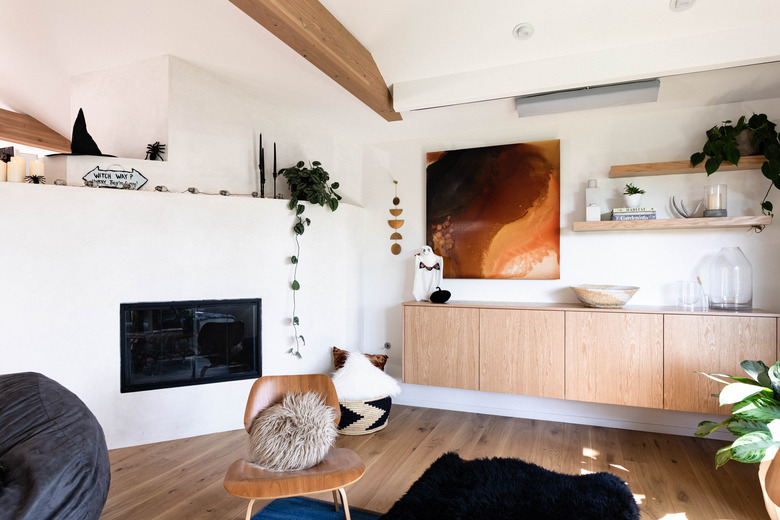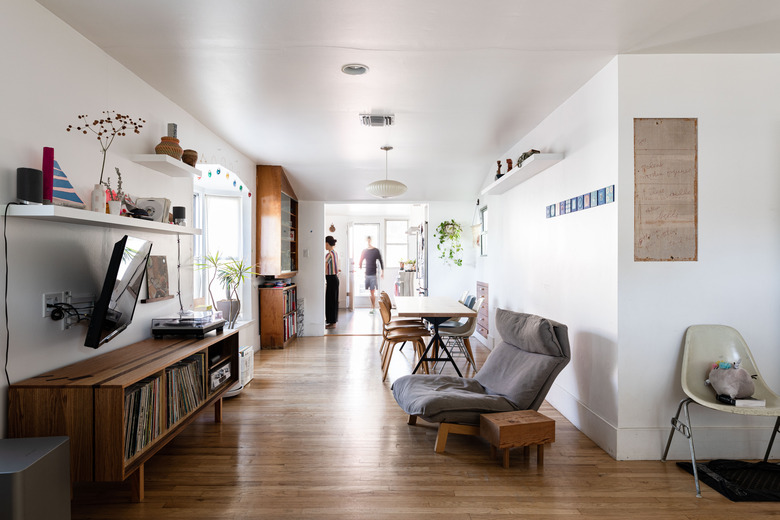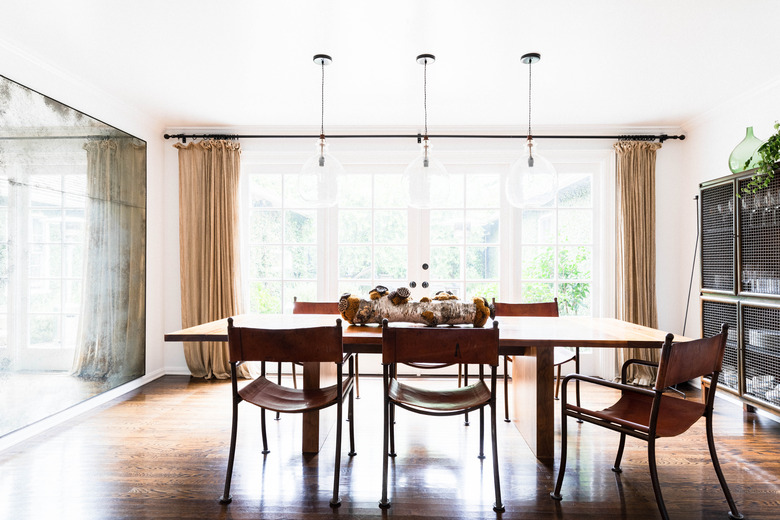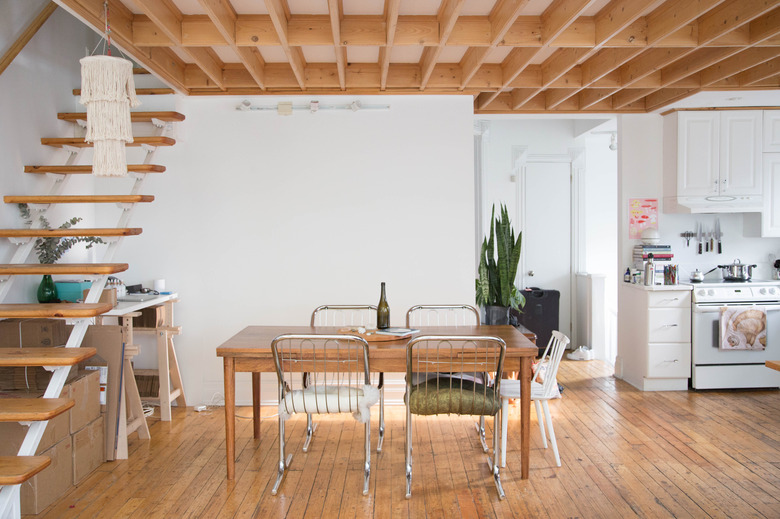Hardwood Flooring Costs: A Homeowner's Guide
Having hardwood flooring is a dream for many homeowners due to its clean, polished look and its durability. Adding hardwood or revamping old flooring with hardwood can be a home improvement project that ends up adding value to your house in the long run, but getting started may seem overwhelming to some.
To keep things simple, it's best to consider just a few key components when planning your hardwood floor installation: the type of hardwood that's best for you, installation costs for different types of flooring, the size of your space and your plans for the use of that space.
Types of Hardwood Flooring
Types of Hardwood Flooring
The term "hardwood floor" can come off as one basic, blanket statement, but not all hardwood floors are the same. Common types of real wood used as flooring include red oak, maple, chestnut and hickory, which are known for being a more durable type of wood that can hold up to heavy foot traffic over time. Less hardy but visually appealing options include somewhat softer woods like American cherry, American walnut and pine. These are usually better left for rooms that see less action, like an office or spare bedroom.
Another type of hardwood known for offering optimal color variation is exotic wood, which includes Brazilian cherry, Brazilian walnut, tigerwood and santos mahogany. These varieties of wood are aesthetically unmatched and are some of the hardest woods available, although they are considerably more expensive. A less-expensive alternative to solid hardwood flooring is a material called engineered wood, which is less durable but offers a similar look at a slightly lower cost and is easier to install.
Solid Hardwood vs. Engineered Flooring
Solid Hardwood vs. Engineered Flooring
If you're looking to enjoy the look and feel of hardwood flooring at a slightly lower cost, look no further than engineered floor boards. Engineered wood is a type of flooring that is comprised of layers of hardwood veneer and plywood that are bonded together through heat treatment and pressing, explains Old House Journal.
While solid wood flooring is made entirely of solid wood, engineered wood contains a top layer of hardwood veneer measuring about 1/16 to 1/8 inch in thickness, with a plywood core beneath the hardwood surface. This, of course, means that you're not getting solid wood all the way through your floorboard plank, but it does perform better in areas where hardwood is problematic, like basements and in floors installed over radiant floor-heating systems.
Despite being a composite product, engineered floor boards can hold up very well, with some thicker types lasting up to 80 years. Just be sure to check the number of layers in your engineered boards — the higher the number of plies, the more durable your boards will be over time. Between five and 12 plies are considered more high-end than thinner varieties and often end up being worth the extra cost in the long run.
Solid hardwood is the gold standard of hardwood flooring just because it's solid wood and not a type of veneered plywood. This type of flooring is preferred to many because it can be sanded down several times, making repairs or buffing out scratches possible and saving you from having to redo your entire floor. Solid hardwood needs to be securely attached to the subflooring and may warp when exposed to constant moisture, which is why this type of flooring is not recommended for rooms like bathrooms and kitchens.
Hardwood Flooring Cost Guide
Hardwood Flooring Cost Guide
The installation cost of hardwood flooring will depend on several factors, including the type of wood you're using, the square footage of the room you're looking to renovate and the labor costs that come with hiring pros to install your floors should you opt for that.
To calculate a rough idea of your installation cost, it's recommended that you measure the square footage of the area you're renovating, add another 10 percent for cut material and multiply that total by the price of your flooring per square foot. As a general estimate, HomeAdvisor states that in 2019, the average cost to install hardwood floors in a home in the United States cost between $6 and $22 per square foot including labor, and homeowners typically end up paying about $4,500 for an average size house.
It's no real surprise that the harder the wood, the higher the price. Exotic hardwood planks like tigerwood and Brazilian walnut average around $8 to $14 per square foot, and hardwood varieties like teak and oak typically cost between $5 and $10 per square foot. Softer wood types like pine cost considerably less at around $3 to $6 per square foot. These ranges in price are determined by the type of wood used, the grade of the cut and the thickness of the plank. Despite not being exactly the real thing, the cost of buying and installing engineered wood is on average nearly the same as solid wood, give or take a dollar or two.
Installation costs will vary depending on your area, but the national average for installing exotic and harder wood is about the same — between $4 and $8 per square foot. Softer wood is less expensive to install, with the average homeowner looking at anywhere from $3 to $5 per square foot in labor costs. Installation costs will vary depending on a number of factors, including the condition of the subflooring, the amount of old flooring that needs to be removed and whether you need the crew to remove and replace your furniture. Doing this yourself may save you some cash, so be sure to ask your installer how much this will cost you if you leave it to them.
One more thing to keep in mind when cross-referencing prices is the warranty that comes with your particular hardwood flooring planks. In some cases, prefinished solid wood boards come with a 50-year warranty, while the average warranty offered for engineered wood is considerably less — usually somewhere between 10 and 30 years. Speaking of pre-finished versus unfinished varieties of flooring, this should be something to consider in your planning phases as well.
Pre-finished wood, also known as factory finished, is sold with a protective coat of finishing already applied to each individual board. Site finished — or unfinished — wood is sold raw and needs to be sanded and finished after it has been installed. While unfinished wood is less expensive to buy outright, generally averaging around $3 to $5 per square foot, the post-install finishing process will end up costing you more overall and is generally not advised for novice home renovators.
The Best Wood by Room
The Best Wood by Room
Generally, solid wood flooring is suitable for use in any room of the home, with hard varieties of wood best left for high-traffic areas and soft wood types in low-traffic spots. One downside to solid wood, however, is its tendency to fall short in areas of the home where water or humidity may be a common occurrence, like bathrooms, kitchens and basements. If you do have solid hardwood in any of these areas, be sure to protect your wood with rugs, which may prevent warping over time.
Engineered flooring, on the other hand, is designed to hold up in any room of the home and works well in spaces that may see moisture on a regular basis. Some flooring installers may make a switch from solid wood to engineered wood to accommodate certain rooms for this reason, and most people don't notice the discrepancy thanks to the veneer applied to the latter. That said, if you have a room that tends to flood or has a concrete slab that contains more than 4 percent moisture, then neither type of wood flooring is recommended because high levels of moisture will surely damage any wood flooring.
The Installation Process
The Installation Process
If you're planning to install hardwood flooring by yourself, the amount of time, money and labor you're going to sink into such a project may be a major factor to consider. Installing solid hardwood flooring and engineered wood are fairly similar processes, with one key detail to keep in mind: the type of sub floor.
Engineered wood is generally installed using a tongue-and-groove technique, in which a piece of wood from the side of one plank slides into the groove of another to lock the pieces together. One thing that makes installing tongue-and-groove engineered flooring easy is that is that it can be laid as a floating floor, which doesn't require wood planks to be nailed down to your subfloor. Instead, you can snap your wood planks together to create a stable surface that expands and contracts as a cohesive unit, which can make it an ideal choice for more humid settings.
To prevent moisture from warping the floorboards, it's recommended that an underlayment, or a moisture barrier, be placed between the floor and the surface beneath it. Moisture barriers are always used when you have a concrete subfloor below your hardwood, and it's not a bad idea to use them on standard types of wood sub flooring, like plywood, particularly if the floor is above a crawl space or unfinished basement. Engineered wood holds up to humidity better than solid wood, but it's not exempt from damage in the same way that a tile floor would be.
Solid wood flooring requires a secure subfloor, like plywood or concrete. Once this type of wood flooring is placed over the floor, the planks are nailed down through the tongue of the plank, which prevents nail heads from showing on the surface of the flooring, or glued directly to a concrete subfloor. Solid wood planks come in a variety of widths, ranging from 1 1/2- to 12-inches wide.
Finishing Your Hardwood Flooring
Finishing Your Hardwood Flooring
If you do decide to finish your own flooring, you'll need to consider the types of finish available and the long-term costs associated with each type. While some people prefer the ease of installing pre-finished planks, others prefer to do their own finishing after an install so they can choose a finish that works best for them. Plus, untreated boards have no beveled edges, creating a smooth-surfaced look. Having a professional finish your hardwood flooring will increase the overall price but also ensure a perfect result.
Doing this step yourself can help you save a few dollars on your labor costs. However, keep in mind this can be quite the undertaking. Common types of finishing include:
- Water-based polyurethane. This option is available in high gloss, semigloss or satin. It dries quickly, is environmentally friendly and adds a moisture-resistant finish to your flooring. Scratches can be apparent on this surface, so it may not be best for high-traffic areas in the house.
- Oil-based polyurethane. This option is also moisture resistant and holds up to traffic and scrapes better than the water-based variety. An oil-based finish does tend to yellow over time, which can add a warm tone to darker woods but may stain lighter varieties. This finish does take a couple of days to dry and cure and gives off a strong, unpleasant odor during application.
- Penetrating oil sealer. This all-natural oil product is easy to apply and will leave your floors looking great although it won't hold up well to normal wear and tear, so be prepared to reapply every few years to keep your floors protected.
Not interested in refinishing your own floors? No problem. Flooring pros can also help with applying finishes that are difficult for the average home repair novice to apply, including moisture-cure urethane, wax, or shellac.



